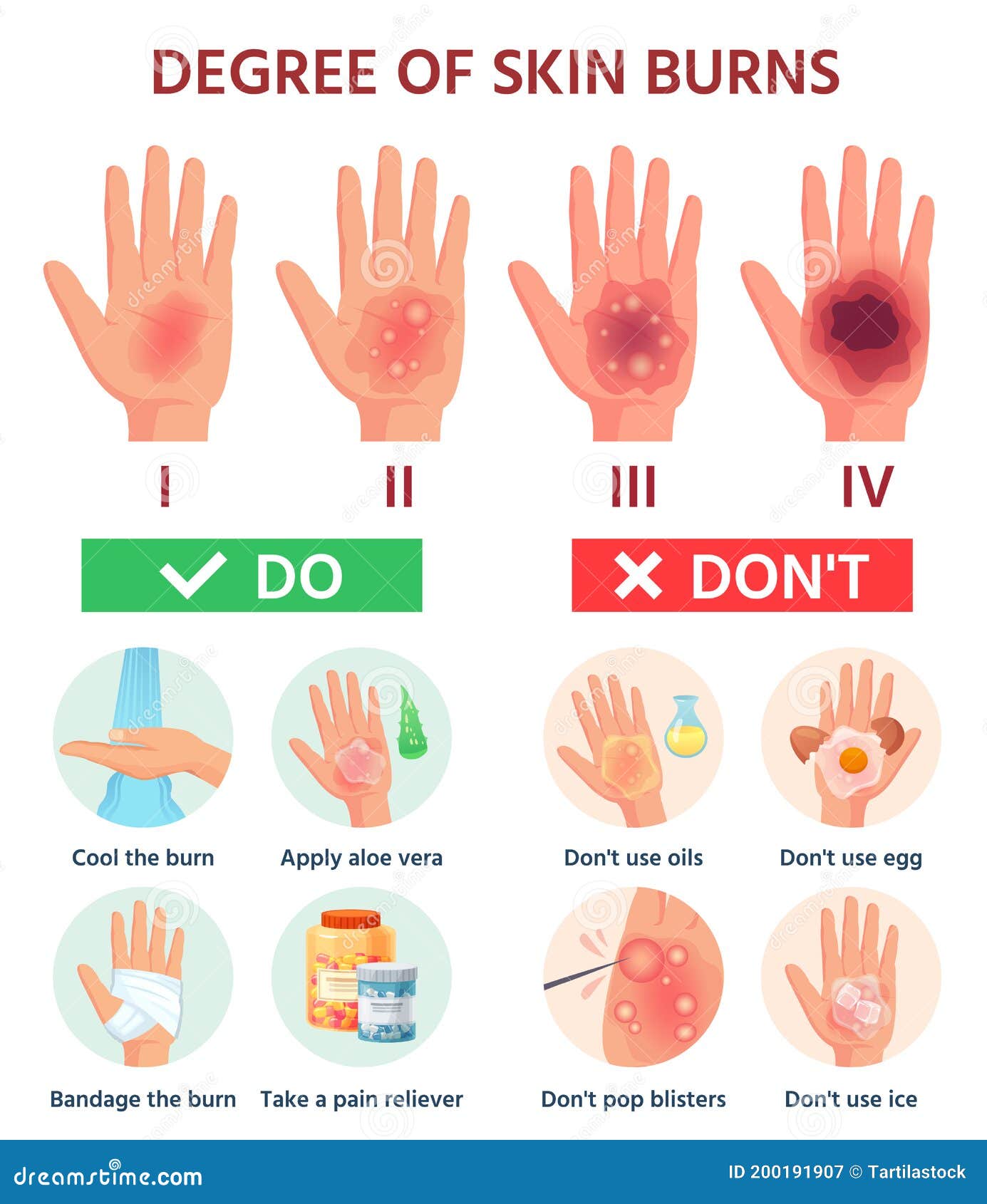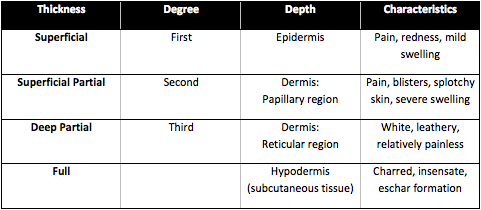Explain the Different Degrees of Burns
These burns involve the top layer of skin and a portion of the second layer of skin. First-degree burns dont blister and only involve the top layer of the skin.

Skin Burn Infographic Stock Illustrations 136 Skin Burn Infographic Stock Illustrations Vectors Clipart Dreamstime
Burns are classified as first- second- or third-degree depending on how deep and severely they penetrate the skins surface.

. Heat such as hot. To determine the level of severity for each burn burns are broken down into 3 basic classifications. Blisters may develop and pain can be severe.
First-degree superficial burns First-degree burns affect only the. In addition to the blisters these burns are more painful and more worrisome. Minor inflammation or swelling.
Burns are classified by severity and penetration through the layers of skin. Second-degree burns damage the outer layer and the layer underneath. Burns due to external heat sources which raise the temperature of the skin and.
Third-degree burns damage or completely destroy both layers of skin including hair follicles and sweat glands and damage underlying tissues. What are the classifications of burns. Signs of a first-degree burn include.
More like a sunburn a bit pink with the potential to cause dehydration for the victim. Since this burn affects the top layer of skin the. First degree burns are of lowest impact whereas 3 rd are of highest impact and.
There are many types of burns caused by thermal radiation chemical or electrical contact. Dry peeling skin occurs as the burn heals. A burn is a type of injury to skin or other tissues caused by heat cold electricity chemicals friction or ultraviolet radiation like sunburn.
Doctors evaluate burns by degree. Here are the four degrees of burns and how they may be treated. Second-degree burns also called partial-thickness burns affect the outermost layer of skin and extend.
Partial thickness burns are often broken down into two types superficial partial-thickness burns and. It may cause swelling and red white or splotchy skin. With second-degree burns there is risk of secondary infection and scarring especially with a.
First Degree Burn. A burn is a type of injury caused by any of the below factors. The four types of burns are first-degree second-degree third-degree and fourth-degree burns.
1st 2nd and 3rd Degree Burns are based on the classification of burns on the basis of their severity. These burns always require skin. First degree burns affect only the.
Burns are considered to be first second third or fourth degree burns depending on the severity. A first degree burn is the least severe of the types of burns. Your provider may classify the burn as.
First-degree burns affect only the outer layer of skin the epidermis. First-degree burns affect only the outer layer of the skin 2nd-degree burns affect the layer beneath the epidermis and 3rd-degree burns reach. It will heal in about a.
Deep second-degree burns can cause scarring. This particular burn is a superficial burn injury. The outer skin layer.
First-degree burns damage only the outer layer of skin. There are three types of burns. This is a superficial burn that will turn your skin red but will not create blisters.
Most burns are due to heat from hot liquids. First- and second-degree burns that cover less than 10 of the body are considered minor and rarely require. Burn Classification First Degree Burn.
These 3 classifications are referred to as 1st 2nd and 3rd degree burns. Burns are categorized as first second or third-degree burns depending on how deep into the skin they go and how much of the bodys skin has been burned. A second degree burn is classified.

Skin Burn Three Degrees Of Burns Type Of Injury To Skin Skin Burns Burns Degree Burns

What To Do When Your Child Gets Sunburned Burns Nursing Degree Burns Types Of Burns

Ny Burn Injury Lawyer Explains How Burn Injuries Can Come In Many Forms Frekhtman Associates Burns Nursing Wound Care Burn Injury

Superficial Partial Thickness Second Degree Burns Woundsource
Comments
Post a Comment